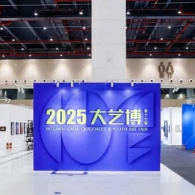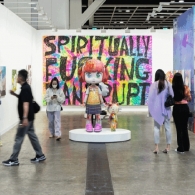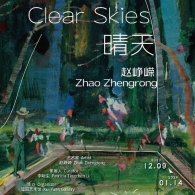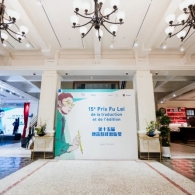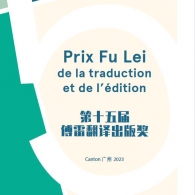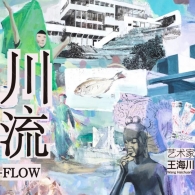内容摘要:虽然广州有两千多年的历史,但是直到我出生的1946年,广州人口也仅仅是120万,是一个顺着珠江从东到西的条带型城市,西到西门口,之后延展到西关,东到较场口、东门,北以中山纪念堂后面的观音山为界,现在的小北、登峰路是城门所在。很小的一个城,社区差异很大,所谓东山西关,事实上是两个不属于传统广州的社区:西关是南番顺、四邑乡绅地主在城里的住宅,靠沙面则多是牙行买办,是土豪根据城市尺度改良的住宅大屋;而东山则主要是早年下南洋、去金山的华侨的住宅。
艺术家:王受之
策展人:黄轶群
展期: 2014年 3月15日——4月16日
时间: 每天 10am – 10pm
地点: 广州市越秀区恤孤院路9号 逵园艺术馆
前言
虽然广州有两千多年的历史,但是直到我出生的1946年,广州人口也仅仅是120万,是一个顺着珠江从东到西的条带型城市,西到西门口,之后延展到西关,东到较场口、东门,北以中山纪念堂后面的观音山为界,现在的小北、登峰路是城门所在。很小的一个城,社区差异很大,所谓东山西关,事实上是两个不属于传统广州的社区:西关是南番顺、四邑乡绅地主在城里的住宅,靠沙面则多是牙行买办,是土豪根据城市尺度改良的住宅大屋;而东山则主要是早年下南洋、去金山的华侨的住宅。一个广州,西城土豪、东城华侨,真正的广州老居民都在中城,过了珠江,称之为“河南”,以前就是乡下了。
我在广州度过7年的童年,经历了1949年“城头变幻大王旗”换帜,跟随父母,去过很多地方,之后虽然迁到武昌,但是年年暑假依然回来,自己的宅子还在中城的连新路,因此可以说是见证过历史的老广州了,东山“逵园艺术馆”邀我办展览,画的真就是记忆中的东山,美好肯定,但是这些画里面其实也有一种契里科(Giorgio de Chirico ,1888–1978)的超现实情绪,当年的东山不可能这么完美浪漫。
我喜欢用木炭画画,并且希望把木炭画成水墨一样的感觉,有些人喜欢归类,是因为从解放之后我们对美术就一直按着“国油版雕”来归,中药店的做法,现在都成学术经典了。木炭画归不了“正规”的档,所以就说这是“插画”(illustration),插画其实并非一种形式,而是需要和文本配合,为了使得自己的画更加能够帮助这些艺术的中药房药剂师归档,我在画上都写了一点点文字,权当文本角色吧!
东山有幸,是以解放就给官军接管,得以保存部分比较好的住宅,民国时期有据说民国后期有2000多栋别墅,现在余下500栋,而真正好的,除了因为有辉煌革命人短期用过的像“春园”这类建筑外,逵园可以说是其中的佼佼者,能够被几个有心年轻人全心全意的做艺术画廊,这建筑三生有幸,我们大家也有幸!
感谢逵园各位,感谢大家的支持!
王受之
2014年2月
王受之
著名设计理论和设计史专家,现为美国设计教育最高学府——美国艺术中心设计学院终身教授,汕头大学长江艺术与设计学院院长。
Impression of Dongshan——Art Exhibition by Wang Shouzhi
Guangzhou was a rather small city when I was born in 1946 . The population then was 1.2 million after WWII. A city developed along a section of short east bound Pearl River flowing toward South China Sea,Guangzhou was basically a long, east-west strip, being encompassed by city wall on three sides, the West Gate, the East Gate, and Guanyin Hill ( Avalokitesvara hill, south tip of Yuexiu Hill now), the south is the river. What we call Xiguan (West Pass) and Dongshan (East Hill) were all beyond the city boundary in the suburbs. There was reat diversification among the communities in 19 century and the Republic period. Xiguan was luxury city dwellings for wealthy landlords from nearby counties –Nanhai, Panyu, Shund and Sze-yap: Xinhui, Taishan, Kaiping and Enping. Dongshan was residence of overseas Chinese who had made their fortune and hoped living occasionally at hometown. The Guangzhou aborigines largely stayed in the midtown. Across the river was “He Nan”( South Bank), just farmland that peasants worked and lived.
I spent my childhood in the city until age of seven. Witnessed flags changed moment in 1949 when Guangzhou was taken over by PLA soldiers from KMT. I had been everywhere in pretty Guangzhou with my parents in that period. Although I was brought by my parents to Wuchang and lived there since 1953, I still came back the town each summer vacation to stay in family house in Lianxin Road near Dr. Sun yat-sen Memorial Hall. In this circumstance I myself become a good witness of the city. The Kui Yuan Gallery in Dongshan invites me to have my painting show held this time. It is a great honor for this exhibition, which contains dozens of paintings on charcoal and Chinese ink. They are the impression of Dongshan from my early memory. Definitely Dongshan from these memories looks great and perfect. But I know those paintings in some way is like Giorgio de Chirico’s surrealistic canvas. The real Dongshan has never been that romantic.
I like charcoal as an art medium and always hope a style of fluency of ink-brushwork could be developed. Categorizing art based on different media rather than art schools has been a way of art connoisseurs and scholars in China since PRC was found. Oil painting, Chinese ink painting, printing, sculpture are main categories. Illustration fails to fall into any of them. For helping fitting charcoal into a category, say illustration which requires text, I did write some text in each paintings.
Dongshan was lucky enough in PRC since the most significant and exquisite residential buildings left by the owners who ran away after the Revolution, were taken over and used by both administrative and military officials. 500 buildings are still standing there, among 2,000 in 1940s. A few of them are in great shape. Besides those once used by underground revolutionaries , such as Chun Yuan (the Spring Garden), Kui Yuan is the most comprehensive one, which has been turned into an art gallery by a group of young art connoisseurs . So lucky to have this building as an art gallery for my works.
My gratefulness to the Kui Yuan Gallery and hope you enjoy the works and building!
Wang Shouzhi
Feb 2014
Wang Shouzhi
Professor of Design theories and history in Art Center College of Design, Pasadena, USA;
Dean of Chueng Kong School of Art & Design, Shantou University, China.
作品欣赏

东山印象-之八,炭笔,2013

东山印象-之二,纸本水墨,2013

东山印象-之九,炭笔,2013

东山印象-之六,纸本水墨,2013

东山印象-之七,炭笔,2013

东山印象-之三,纸本水墨,2013

东山印象-之五,纸本水墨,2013

东山印象-之一,纸本水墨,2013




